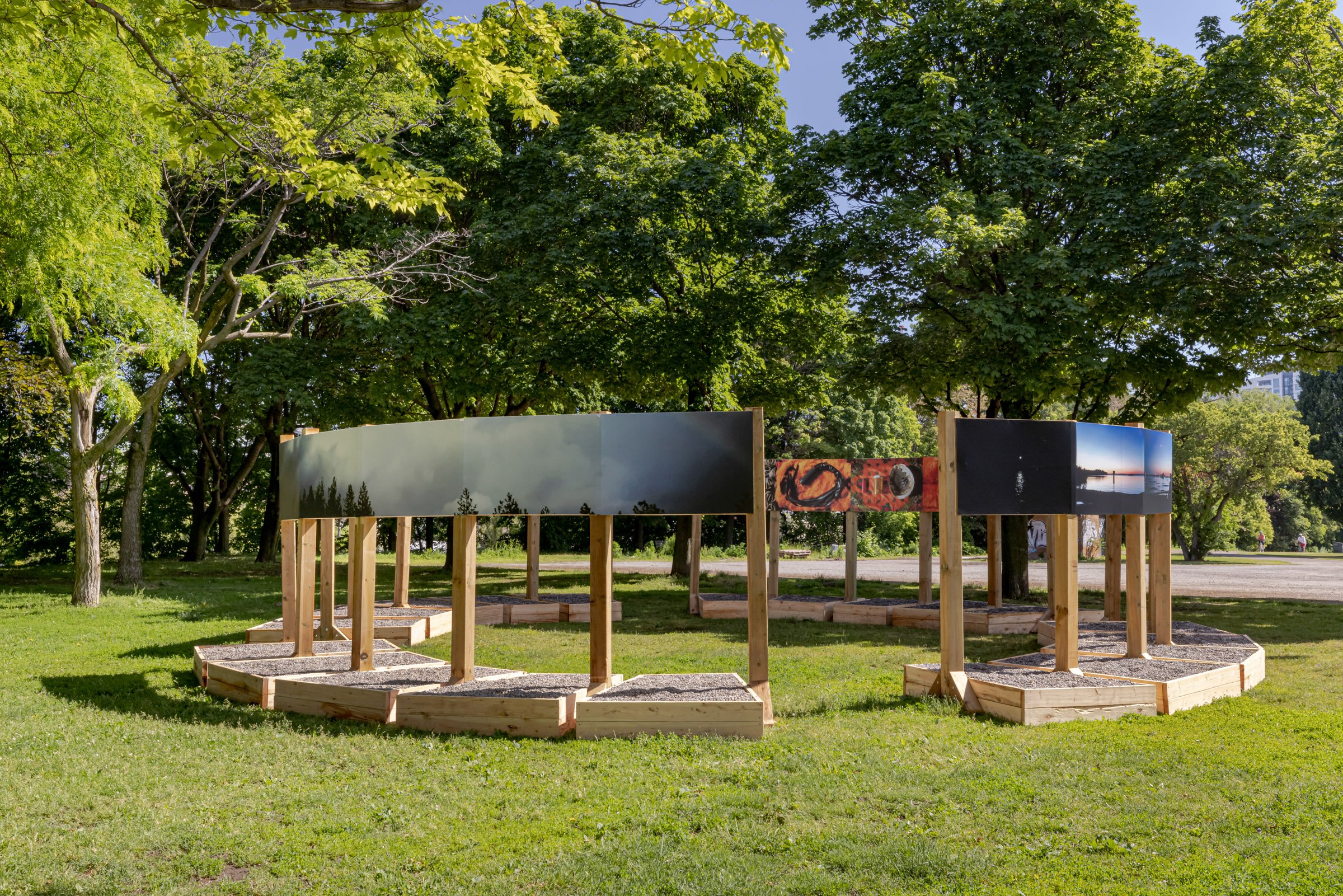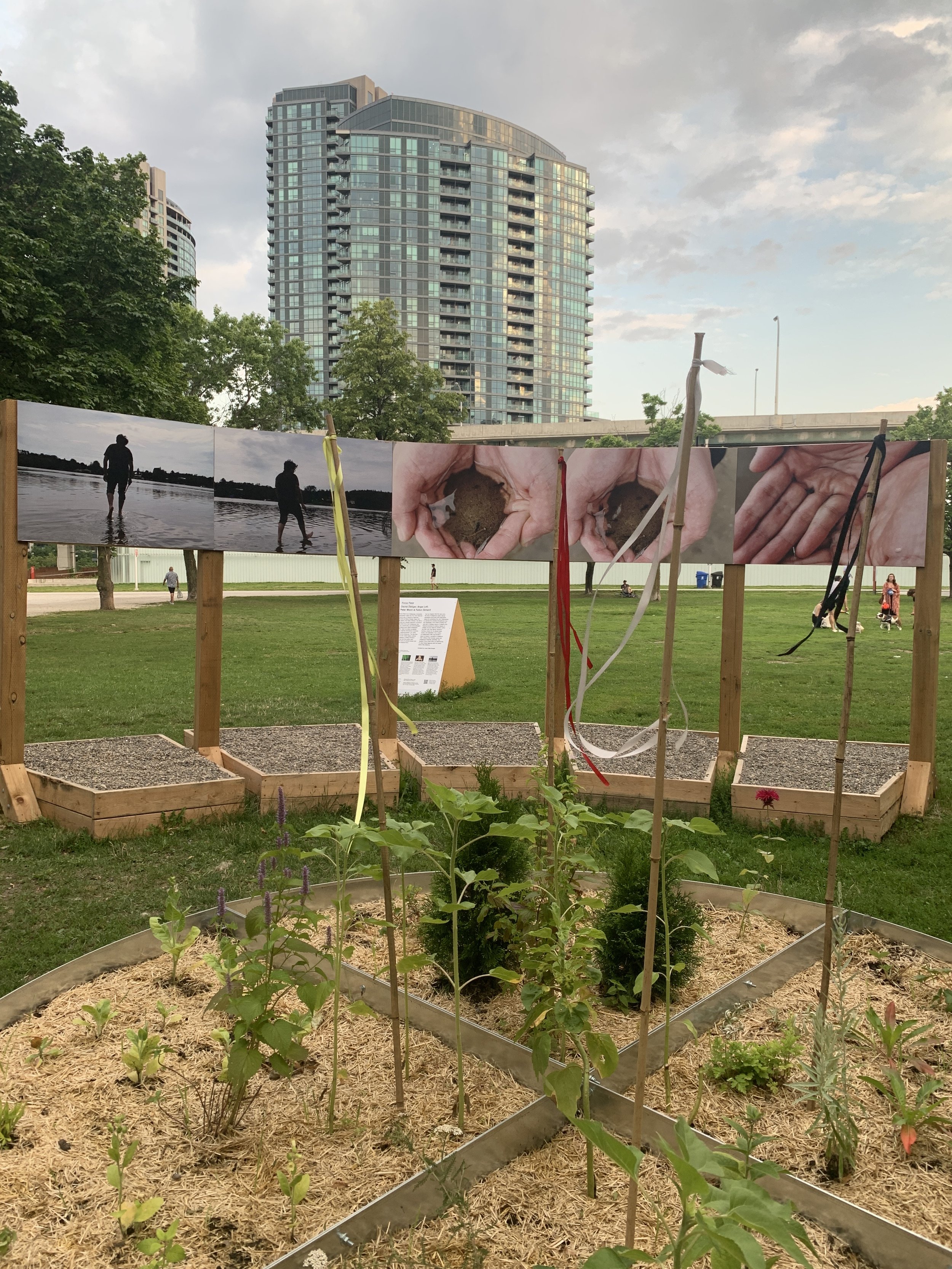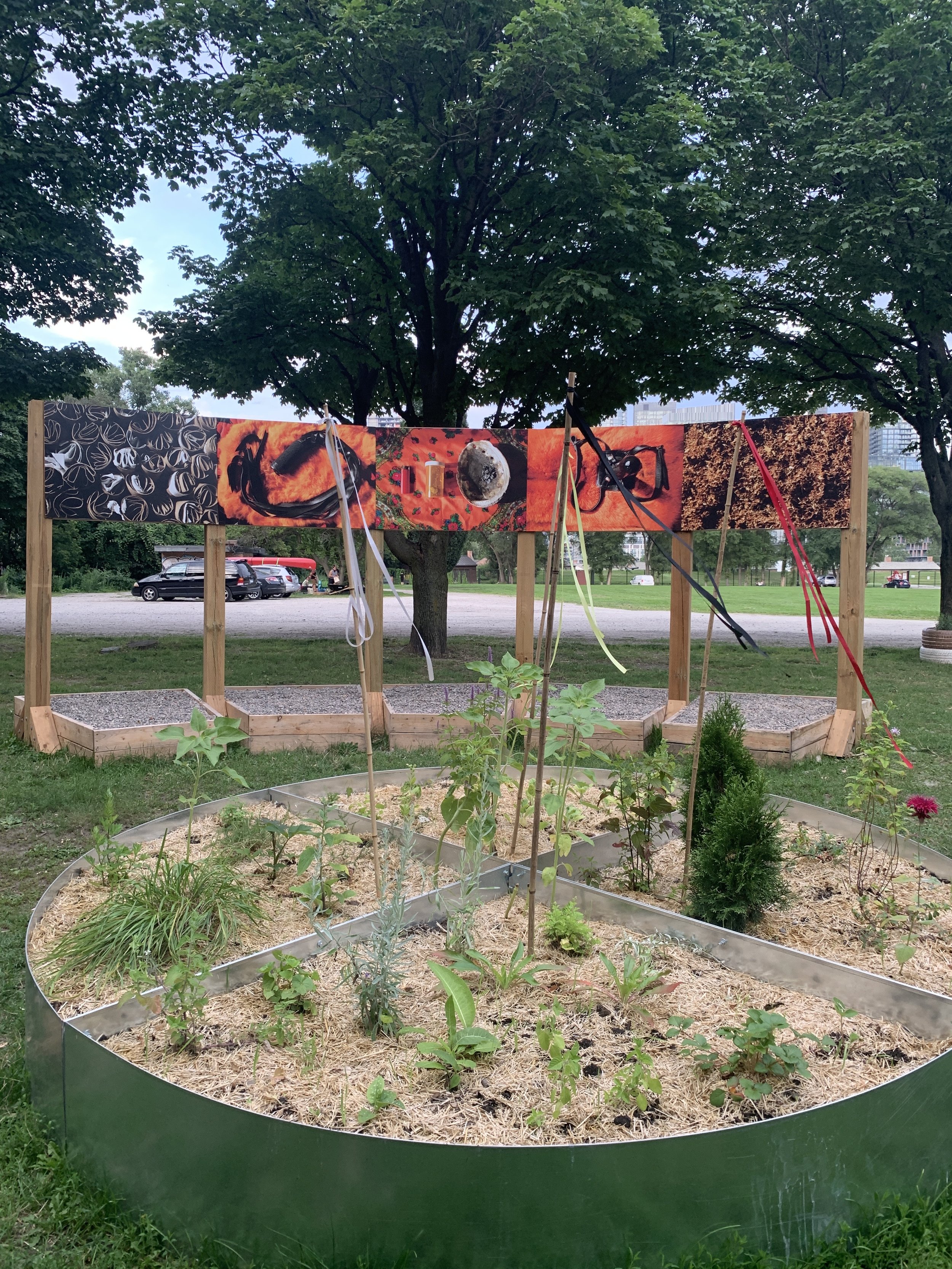
Force Field is an Indigiqueer, immersive intervention within the Fort York National Historic site in Tkarón:to, featuring artworks by Dayna Danger (Métis/Saulteaux/Polish), Ange Loft (Kahnawake Mohawk), Peter Morin (Talhtan Nation), and Fallon Simard (Anishinaabe-Métis). Through a series of curved panoramic billboards arranged in a circular formation, the installation draws inspiration from a medicine wheel, as each artist responds to one of the four directions and their associated natural elements.
Force Field marks a return to Fort York for Tkarón:to-based curator Logan MacDonald (Scottish/Irish/Mi’kmaw), who initially addressed the site for Nuit Blanche in 2019 as an artist in the Placeholder collective. Expanding on ideas nurtured by this initial project, MacDonald writes about how he has broadened the dialogue by gathering together a new group of artists:
The project’s title, Force Field, is intended as a double entendre—it honours the positive force that Indigiqueer folx offer as a community, and acknowledges the individual force fields Indigiqueer folx often need to protect ourselves from the ongoing dominance of various colonial, heteronormative, cis, white, and patriarchal pressures. The installation’s circular viewing structure physically mirrors what we might imagine a real protective force field would look like, creating a buffered safe space within an area historically rife with hazard. The title also connects to the violent legacy upheld by memorializing a military fortress—underscoring how this public park supports the acts of colonial power and brutality once exerted there.
Each artist brings a unique perspective to the exhibition. In addition to connecting with the site and the installation’s overarching Indigqueer themes, artists were also asked to respond to one of the four natural elements.
Dayna Danger immediately found energy in fire and reimagined this site as having a pre-colonial history of Indigiqueer sexual expression. Could Dish with One Spoon have once been the site for 2-Spirit queer embrace? Could there be a legacy of sharing more than resources and trade routes? Danger presents Kinky Bundles (2021),a series of sex-positive photographs that document collections of tools and medicines connected to intimacy, such as a harness, whip, and sage. A kinky bundle has a lot of potential to make fire.
Ange Loft digs deep into earth, presenting a vibrant collection of images from their series If only I’d known a place to grow (2021), which illustrates landlessness, showing movement across landscapes in search of sustenance (corn, blackberries, and beef jerky). Diaspora is common for many of us Indigenous queer folx who migrate to urban centres to build our own communities. Loft focuses on how physical connections to land may be uprooted, but our understandings of home are constant.
Peter Morin seems to have materialized air through a series of stills from his performance For Âhasiw Maskêgon-Iskwêw (2016) and Stand-up comedy for totem pole (2012). Paying homage to a hero, Morin invites visitors into moments of intimacy and reflection. The artist shows himself suspended in motion, perhaps to hold space for past legacies. The image of a beaded medallion appears on his chest, which depicts a crow with outstretched wings, perhaps to signal wisdom, freedom, and transformation—honouring those who have soared away.
Fallon Simard pulls us closer to water with Water Walker (2021), a series of images set along a beach shore. The ebb and flow of tides are as interconnected with time as bodies are to water—a concept Simard sets alongside the capture of time’s passage. In one sequence, they seem to joyfully walk across water; in another, hands cradle small tadpoles in a pool of water with sand, which then gradually slip away between fingertips. Focusing on the temporality of nature, Simard might be considering how colonial narratives can overpower our own connections and histories to land and water.
Force Field brings forth alternative values for upholding this site. Toronto means “where there are trees in water,” and a garden planned for the centre of this installation, among the trees of Garrison Common, gestures to these origins. It also points to the shared resources we know the Dish with One Spoon was created to embrace. The garden’s healing properties reference the medicines our Indigiqueer ancestors may have loved and wanted us to tend.
By interrogating the ongoing implications of supporting Fort York as a memorial, this project questions why we collectively protect space that glorifies the violence of a historic colonial period. Whom does this serve? Indigenous people and communities continue to be impacted and harmed by these exclusionary false narratives. Attempting to override the colonial stranglehold over the history of this particular landscape, this project activates the site with a renewed sense of integrity and historical purpose by asking viewers if, instead, we can value this site for its position within the Dish with One Spoon wampum territory, known for its shared trade routes, as a place of collaboration. Can we imagine that this was once the site of Indigenous queer sexual expression? Why not allow this as a public space that honours a narrative of pleasure over violence? Let’s create public parks that include queer and Indigenous histories, activities, and bodies. Force Field offers an opportunity to value these legacies with the public space they deserve.
Group exhibition, Force Field, installation at Fort York National Historic Site, Garrison Common, Toronto, 2021. Courtesy of the artists and CONTACT. Selected photos by: Toni Hafkenscheid and Logan MacDonald














